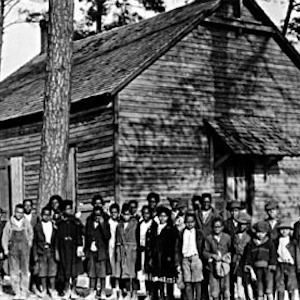Children

Paleolithic Finger Flutings Cave Drawing
This image from Chamber A1 of Rouffignac Cave was created by a young girl we posit to be between four and five years old from her height and the places in the cave where she has chosen to make her flutings.

Traditional and Modern Primary Education in Thailand
The image shows the reverse of a Thai 100-baht banknote, with engravings of of King Chulalongkorn and King Vajiravudha statues. The banknote's background theme is education.

Boys' Initiation Mask (keweke)
This mask worn by boys during initiation rituals in Papua New Guinea is made of painted bark cloth and canvas stretched over a cane frame. The long fiber fringe adds movement to the mask, which is worn during dances and other secret rituals that that comprise boyhood initiation rites.

Gope, Ancestor or Spirit Boards
The object in the photograph is a gope, or spirit board (also called kwoi or hohao). This example is from Papua New Guinea near the Wapo Creek on the Gulf of Papua.

American Indian Girls Playing with Dolls
In this photograph, taken near the turn of the 20th century, American Indian girls in the southwestern United States are learning through play how to be mothers and keepers of the home.

Blocksom’s School
These two photographs show before and after pictures of Blocksom's School in Sussex County in rural Delaware. The first photo (taken in 1917) shows the pupils standing outside the original one-room schoolhouse made of wood.

Student Letter to Pierre DuPont
Thelma Norwood, a 7th-grade student in Nassau, Delaware, wrote this letter in 1925. The school was segregated, or used only by African Americans, while separate schools were maintained for white students.

The Lemonade Stand
The lemonade stand is a widely used and recognized symbol of capitalism and in particular entrepreneurship. The selling of lemonade on the streets of New York can be traced back to when a New York youngster sold it to thirsty street car riders over 130 years ago.

Christmas Poem, Pima Indian School
The poem and photographic collage is the work of students at the Pima Indian School boarding school near Phoenix, Arizona, and is part of an album probably owned by the school matron. The school was one of some 150 institutions for Indian wards of the U.S. Government.

Barbie Turns 21
Barbie—who is today the most famous doll in the world—was based on Lilli, a sexy and sassy German doll first produced in 1955.